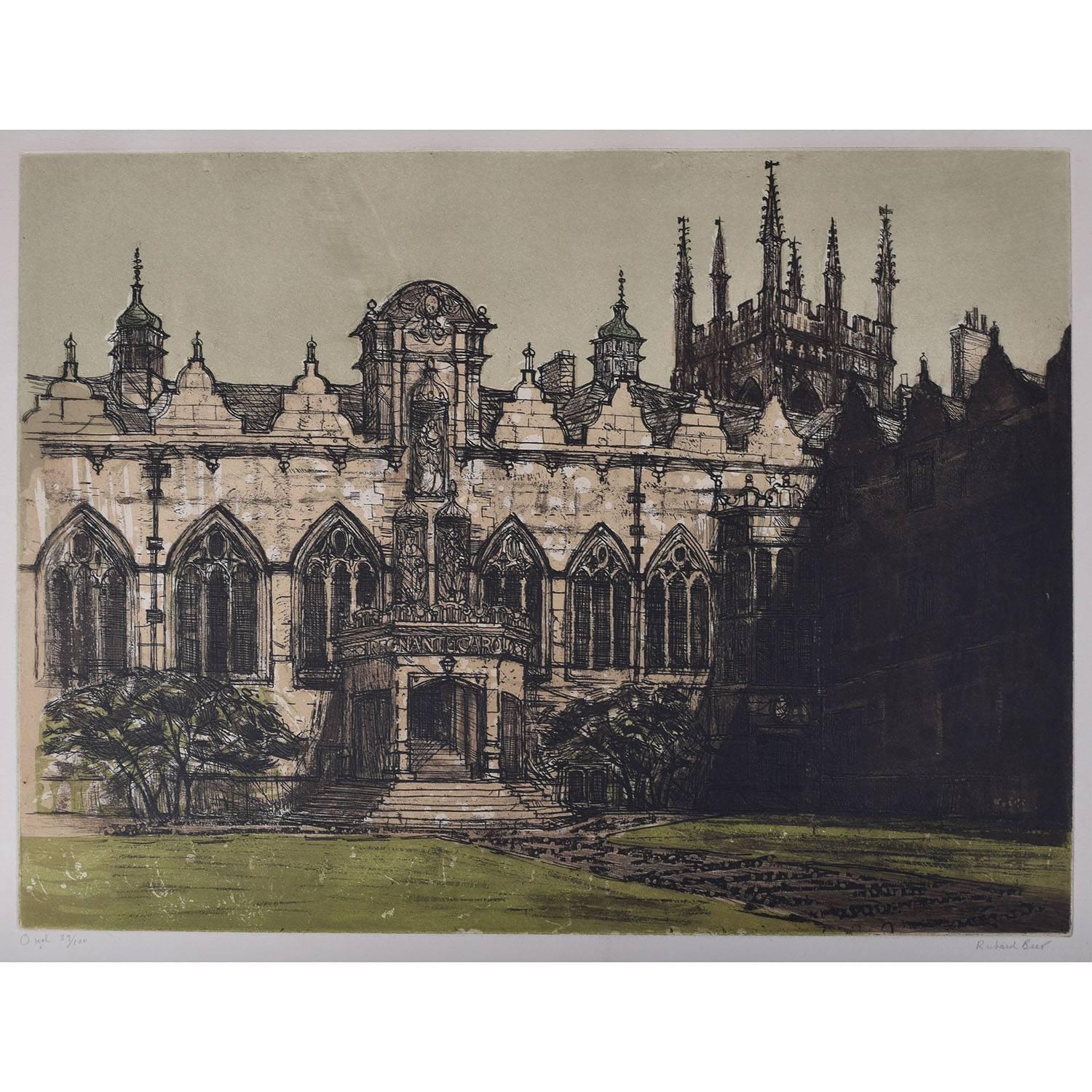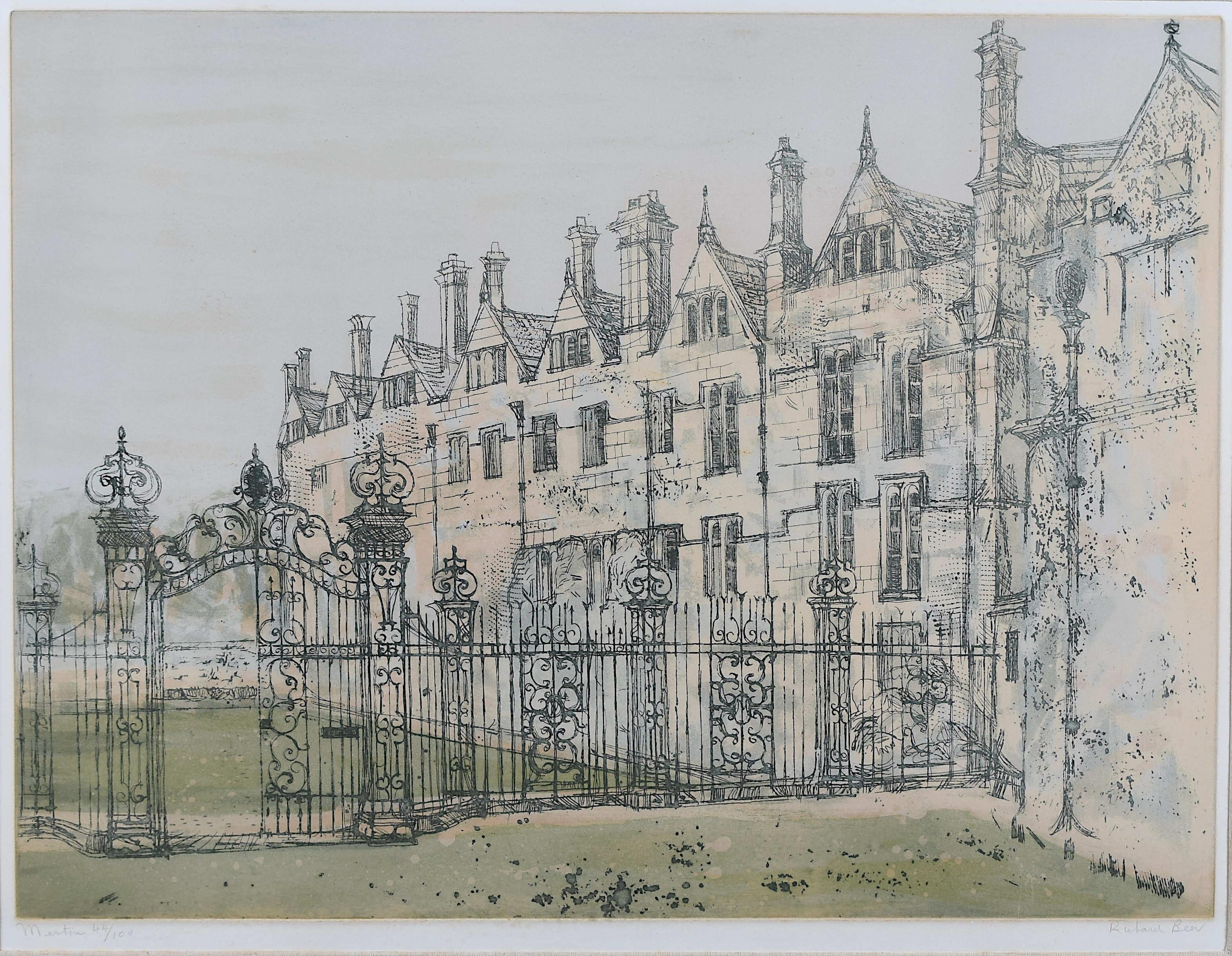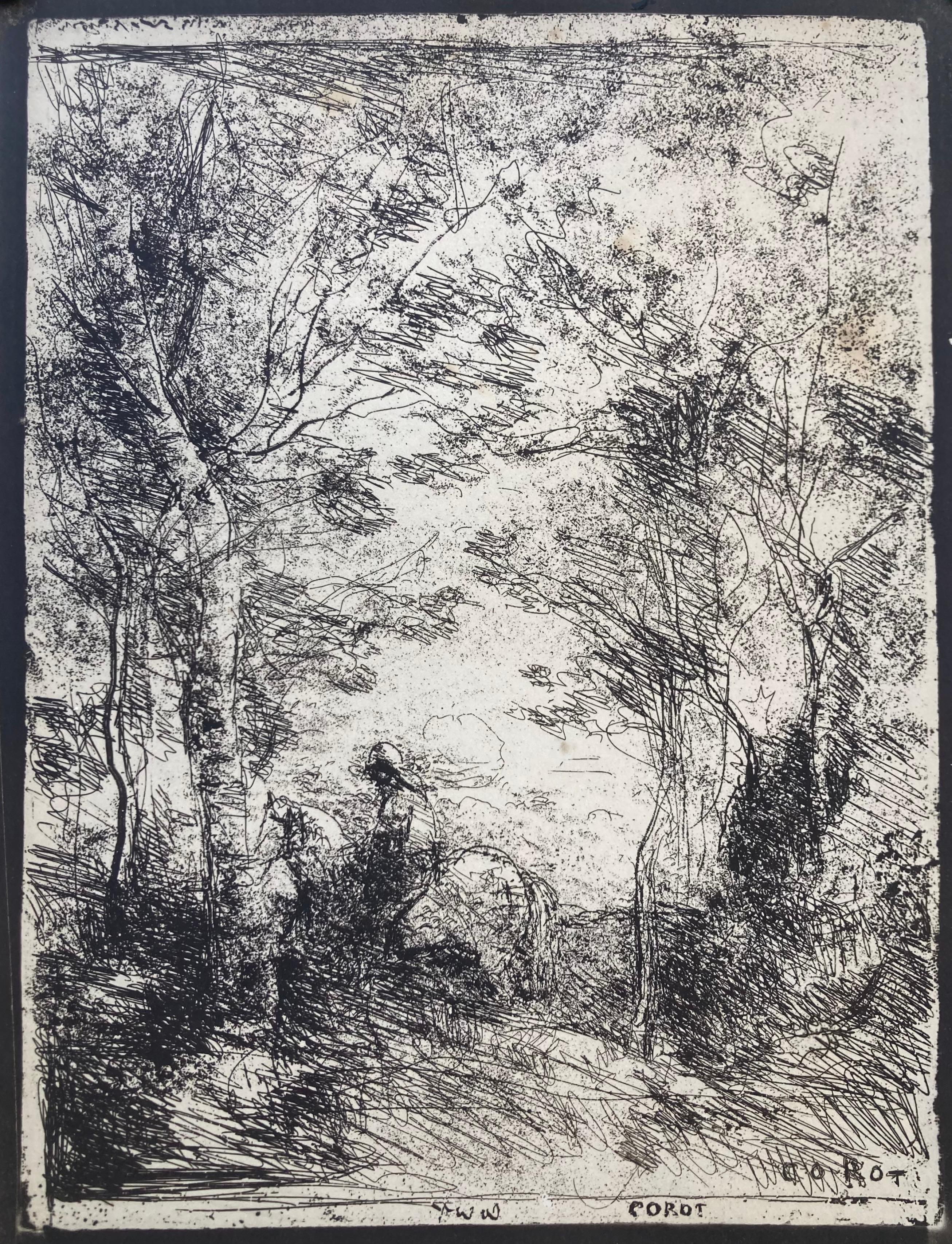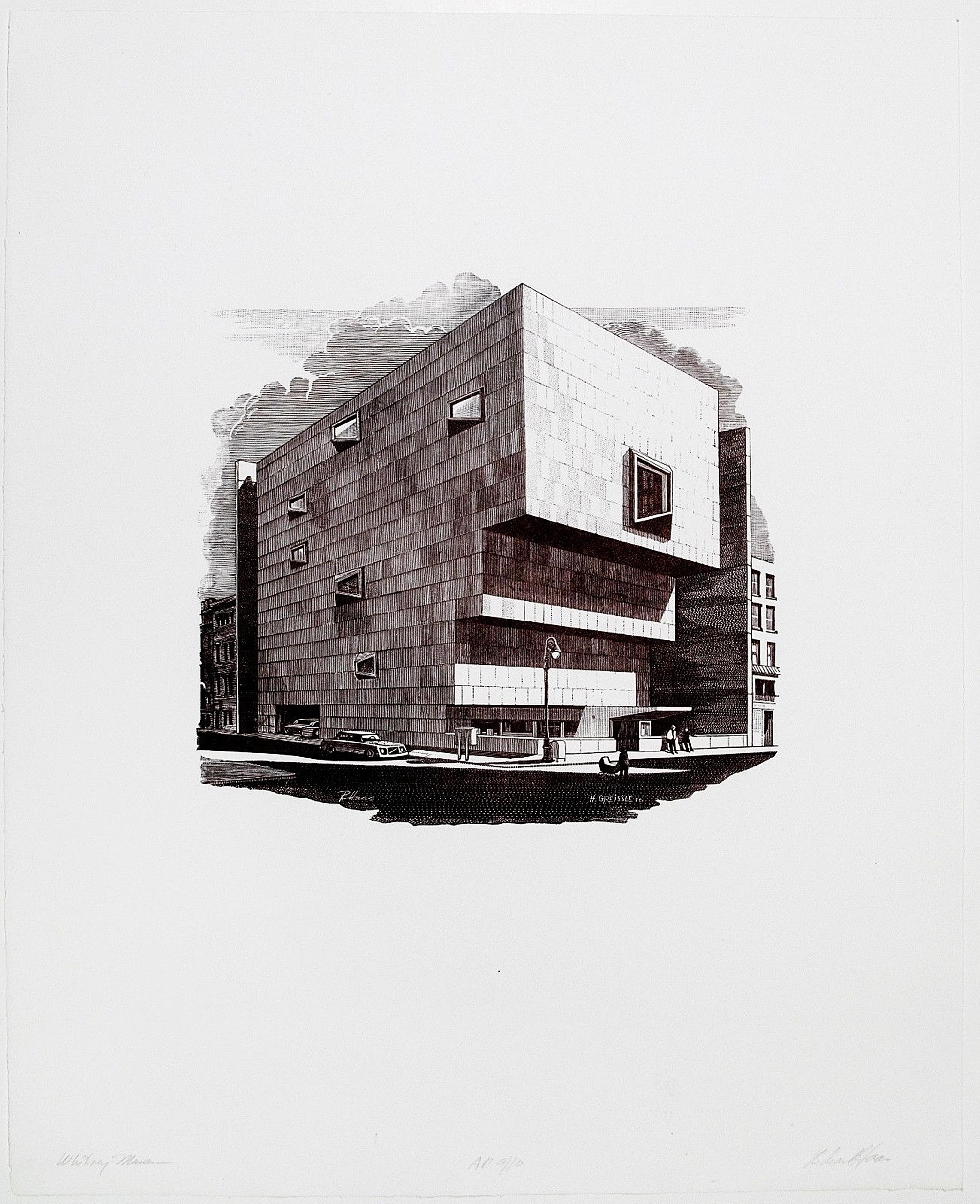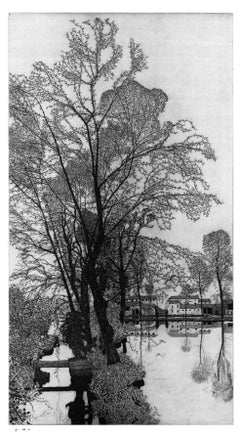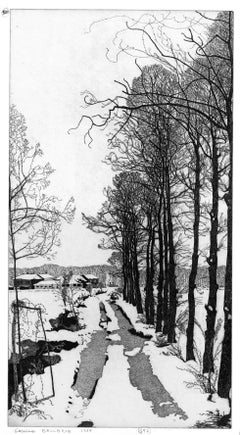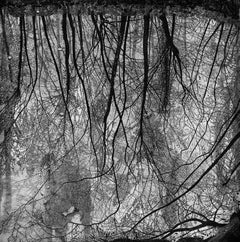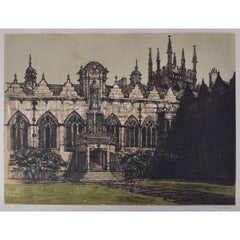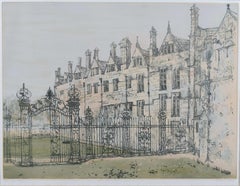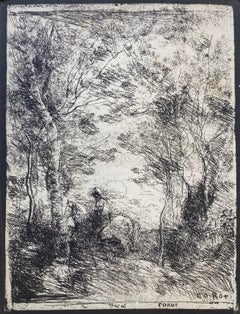Federica Galli, an exquisite and prominent Italian etcher, dedicated two to the etchings of 39 Venice Viewscaps. She was able to interpret the splendid Italian city from an authentic unique standpoint.
Some of the 39 Views have been conceived as pairs, such as those featured above.
The pair of prints comprising Lo Squero, which is the most historic Gondole manufacturer boats in Venice, and it is still operating; and Lake of Pageri.
The two prints are perfect in terms of both size and atmosphere.
Lo Squero, etching, cm 29,3x79,1 (plate size + margins)
Lago dei Pageri, etching, cm 29,4x79,3 (plate size + margins)
A numbered and signed limited edition at 90. Unframed.
Illustrations featuring both views; exhibitions on Mrs Galli's artworks in Federica Galli Foundation and in other locations; and her portrait taken by photographer Gianni Berengo Gardin.
Just prior to her death Federica Galli created a foundation, located in the center of Milan, the object of which is to develop the passion an the awareness for original fine prints.
One complete portfolio of Views of Venice (comprising 39 etchings) is conserved in NMWA, National Museum of Women in Arts, Washington.
The complete portfolio Views of Venice was exhibited at the Fondazione Giorgio Cini, Venice, in 1986. And is available on request.
You may find Federica Galli Foundation on the Google Art Project, as the entitled page of Fondazione Federica Galli.
Biography
A prominent figure of the art of engraving in Italy, Federica Galli was born in 1932 in Soresina – a village just outside Cremona.
Straight after the war, in 1946, she convinced her parents to enrol her at the Artistic Lyceum in Milan and in 1950 she went on to attend the Academy of Fine Arts of Brera, from where she graduated four years later with a diploma in painting.
She began engraving in 1954 - “Il paese dell’Alberta”- experimenting with etching, a technique she never abandoned for the rest of her life. In 1966 she married the journalist, Giovanni Raimondi – editor-in-chief of the Corriere della Sera – and began to embark on a densely packed programme of cultural trips that took her to the most important European capitals, and to countries where the art of engraving is less deeply rooted. This was also the year in which she matured the conviction that engraving was the technique in which she expressed herself most effectively and started to apply herself exclusively to this art form, producing over eight hundred different subjects.
Starting from her early personal exhibitions – the first one took place in 1960 in Milan – she met with the favour of public and critics alike. In the space of a few years, she could count on the support of some of the most authoritative critics of her time: Franco Russoli, Mario de Micheli, Giovanni Testori – who was to follow her closely until he died - Mina Gregori, Gian Alberto dell’Acqua, Roberto Tassi, Renzo Zorzi, Carlo Bo, Daniel Berger (Metropolitan Museum of New York), Gina Lagorio, Giuseppe and Francesco Frangi, Marco Fragonara, Giorgio Soavi and David Landau (Oxford University).
She obtained the most prestigious institutional acknowledgements given to any contemporary artist: she was the first living artist to be invited to exhibit at the Fondazione Cini in Venice - 1987 with a collection dedicated to the lagoon city - ; at the Civic Museum of Palazzo Te in Mantua - 1987 - ; at the Castello Sforzesco in Milan - 1988 - ; in the Imperial Archive of the Forbidden City, Wag Fung gallery, - 1995 -.
Collectors of her works include people of culture from Italy and elsewhere, individuals known for their cultivated passion for the graphic arts, comprising – just to mention some of the most famous: Dino Buzzati, Leonardo Sciascia, Francois Mitterand.
An extensive and exhaustive testimony of her works may be viewed at the Ala Ponzone Civic Museum of Cremona, in the Bertarelli Collection of the Castello Sforzesco in Milan, at the Villa Reale of Monza close to Milan.
Between 1954 and 2008, Federica Galli engraved over eight hundred plates with a focus on three principal themes: landscapes, trees and cityscapes. Her landscapes are mainly those of the Lombardy plain, with poetic descriptions of its characteristic farmsteads: adding up to about fifty artworks.
The urban views are those of Milan and Venice, cities that held a special meaning in the life of Federica Galli, who expressed her gratitude in the form of a vision that is perceptive and honest, but never banal.
Her passion for nature, combined with a capacity to bring forth its most enchanting aspects, are revealed in over one hundred plates. Her notorious technical skills enabled her to surmount obstacles that are formidable for engravers, such as the representation of snow and nocturnal scenes, without ever succumbing to affected mannerisms.
The artist has dedicated a collection of works to the most important Monumental Trees of our peninsular, with over sixty plants selected for their historical, naturalistic or aesthetic interest. An exceptionally beautiful collection.
Federica Galli, who passed away on 6 February 2009, has entrusted her artistic legacy to a Foundation bearing her name, which was set up on 17 July 2009 in Milan. This Foundation, whose directors and their relative functions were designated by Ms Galli herself, pursues the objective of safeguarding the name and work of this artist who has left her mark on the Italian art history of the last fifty years. The Board is chaired by Lorenza Salamon, who operates alongside Flavio Arensi (critic and art director of Palazzo Leone da Perego in Legnano), Ivana Iotta (curator of the Civic Museum of Cremona), Franco Grechi and Alberto Galli.
Ten years after her death, in 2019, the city of Milan has paid homage to her with a large institutional retrospective, the Green Grand Tour exhibition and the naming of a new city street.
